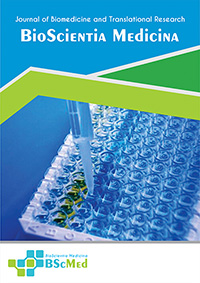Main Article Content
Abstract
Background: Vascular access is a critical lifeline for patients with end-stage kidney disease requiring hemodialysis. The optimal choice among central venous catheters (CVCs), arteriovenous grafts (AVGs), and arteriovenous fistulas (AVFs) is a subject of intense debate, as each modality carries a distinct profile of risks. This meta-analysis was performed to establish a definitive, quantitative hierarchy of these risks to better inform clinical and policy decisions.
Methods: A systematic search of PubMed, Scopus, and the Cochrane Library was conducted for studies published between January 2015 and September 2025 that compared complication rates among CVCs, AVGs, and AVFs in adult hemodialysis patients. Seven high-quality cohort studies met the inclusion criteria, encompassing 18,542 patients. Data on access-related bloodstream infections (ARBSI), access circuit thrombosis/dysfunction, and all-cause mortality were extracted. Pairwise meta-analyses using a random-effects model calculated pooled risk ratios (RR) and 95% confidence intervals (CI).
Results: Central venous catheters were associated with a profoundly higher risk of ARBSI compared to both AVFs (RR 8.12, 95% CI 6.98–9.45, p < 0.001) and AVGs (RR 4.55, 95% CI 3.89–5.33, p < 0.001). Arteriovenous grafts demonstrated a markedly higher risk of access circuit thrombosis compared to AVFs (RR 2.78, 95% CI 2.41–3.21, p < 0.001). All-cause mortality was highest in patients with CVCs, showing a significantly increased risk compared to AVF users (RR 1.92, 95% CI 1.68–2.19, p < 0.001).
Conclusion: This meta-analysis provides robust, contemporary quantitative evidence for a clear hierarchy of harm in hemodialysis access. CVCs pose the greatest risk for infection and mortality, AVGs present the highest risk for thrombosis, and AVFs represent the safest option. These data provide a powerful rationale for reinforcing systemic healthcare initiatives aimed at minimizing CVC exposure and promoting timely AVF placement.
Keywords
Article Details
As our aim is to disseminate original research article, hence the publishing right is a necessary one. The publishing right is needed in order to reach the agreement between the author and publisher. As the journal is fully open access, the authors will sign an exclusive license agreement.
The authors have the right to:
- Share their article in the same ways permitted to third parties under the relevant user license.
- Retain copyright, patent, trademark and other intellectual property rights including research data.
- Proper attribution and credit for the published work.
For the open access article, the publisher is granted to the following right.
- The non-exclusive right to publish the article and grant right to others.
- For the published article, the publisher applied for the Creative Commons Attribution-NonCommercial-ShareAlike 4.0 International License.





